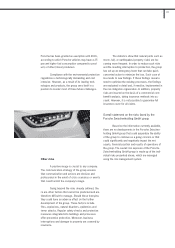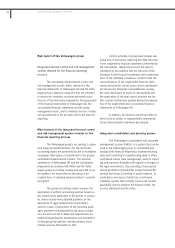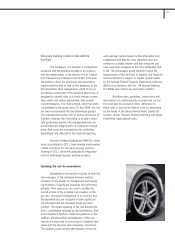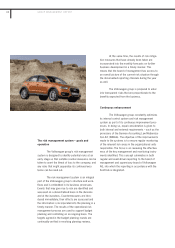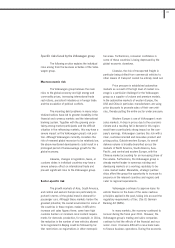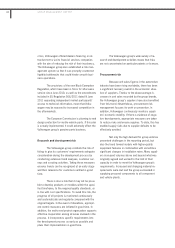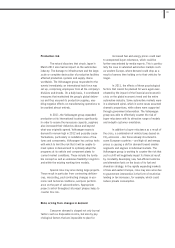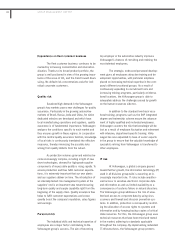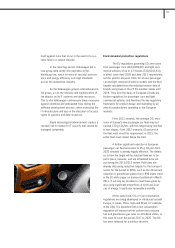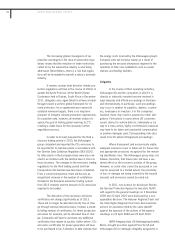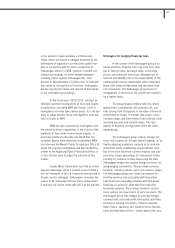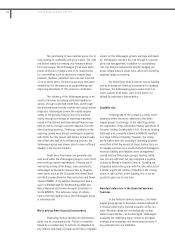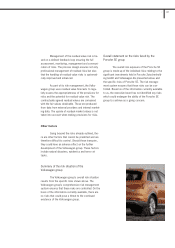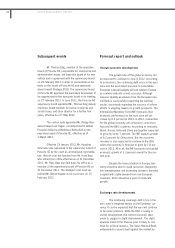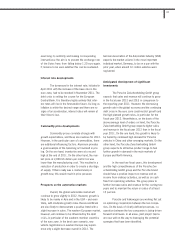Porsche 2011 Annual Report Download - page 125
Download and view the complete annual report
Please find page 125 of the 2011 Porsche annual report below. You can navigate through the pages in the report by either clicking on the pages listed below, or by using the keyword search tool below to find specific information within the annual report.
in the amount of approximately 1.8 billion euro.
These claims are based on alleged breaches by the
defendants of legislation to protect the capital mar-
kets in connection with Porsche’s acquisition of
Volkswagen shares in 2008. Investors initiated con-
ciliation proceedings for other alleged damages –
including claims against Volkswagen AG – that
amount to approximately 2.6 billion euro in total and
also relate to transactions at that time. Volkswagen
AG has rejected all claims and refused to participate
in any conciliation proceedings.
In the fiscal years 2010/2011, antitrust au-
thorities launched investigations at truck and engine
manufacturers including MAN and Scania. Such in-
vestigations normally take several years. It is still too
early to judge whether these investigations pose any
risk to Scania or MAN.
MAN has also launched an investigation into
the extent to which irregularities in the course of the
handover of four-stroke marine diesel engines, in
particular whether technically calculated fuel con-
sumption figures were externally manipulated. MAN
has informed the Munich Public Prosecution Office (I)
about the ongoing investigation and has handed the
matter to the Augsburg Public Prosecution Office. It
is also still too early to judge the outcome of this
matter.
Suzuki Motor Corporation has filed an action
against Volkswagen AG at a London court of arbitra-
tion for retransfer of the 19.9 percent interest held in
Suzuki, and for damages. Volkswagen considers the
claims to be unfounded and has filed counterclaims.
A decision will not be made until 2013 at the earliest.
Strategies for hedging financial risks
In the course of the Volkswagen group's bu-
siness activities, financial risks may arise from chan-
ges in interest rates, exchange rates, commodity
prices, and share and fund prices. Management of
financial and liquidity risks is the responsibility of the
central group treasury department, which minimizes
these risks using non-derivative and derivative finan-
cial instruments. The Volkswagen group board of
management is informed of the current risk situation
on a regular basis.
The group hedges interest rate risk, where
appropriate in combination with currency risk, and
risks arising from fluctuations in the value of financial
instruments by means of interest rate swaps, cross-
currency swaps and other interest rate contracts with
matching amounts and maturity dates. This also
applies to financing arrangements within the Volks-
wagen group.
The Volkswagen group reduces foreign cur-
rency risk in particular through natural hedging, i.e. by
flexibly adapting production capacity at its locations
around the world, establishing new production facili-
ties in the most important currency regions and also
procuring a large percentage of components locally,
currently for instance in India, Russia and the USA.
Volkswagen hedges the residual foreign currency risk
using hedging instruments. These include currency
forwards, currency options and cross-currency swaps.
The Volkswagen group uses these transactions to
limit the currency risk associated with forecasted
cash flows from operating activities and intra-group
financing in currencies other than the respective
functional currency. The currency forwards and cur-
rency options can have a term of up to six years. The
Volkswagen group thus hedges its principal foreign
currency risks associated with forecasted cash flows,
primarily in sterling, US dollars, Chinese renminbi,
Swiss francs, Japanese yen, Swedish krona, Russian
ruble and Australian dollars – mostly against the euro.
125
2


